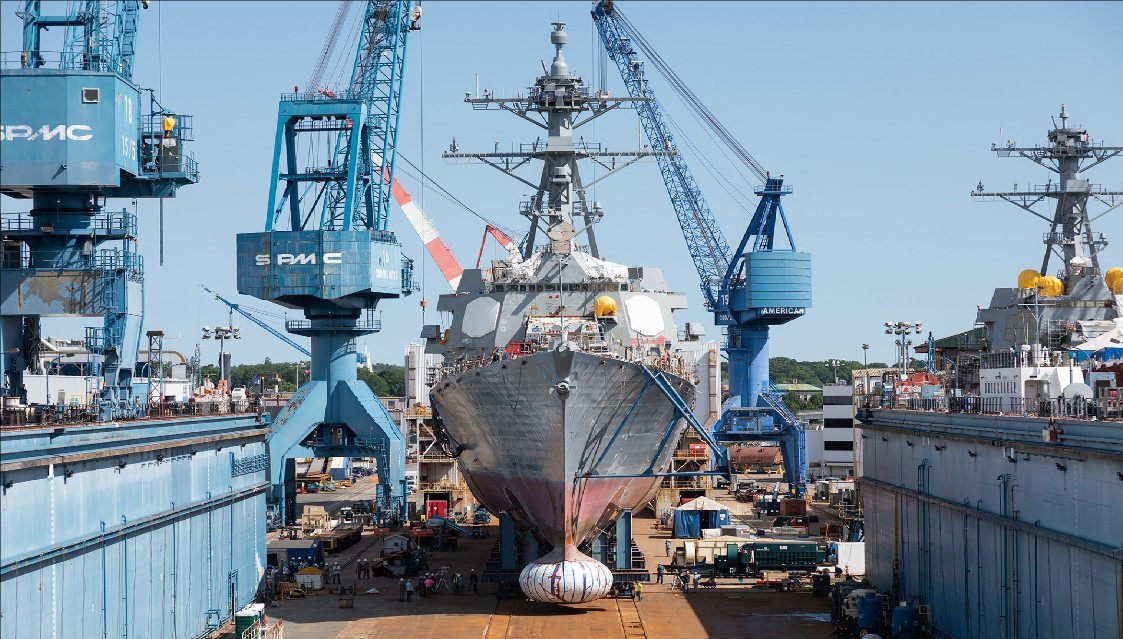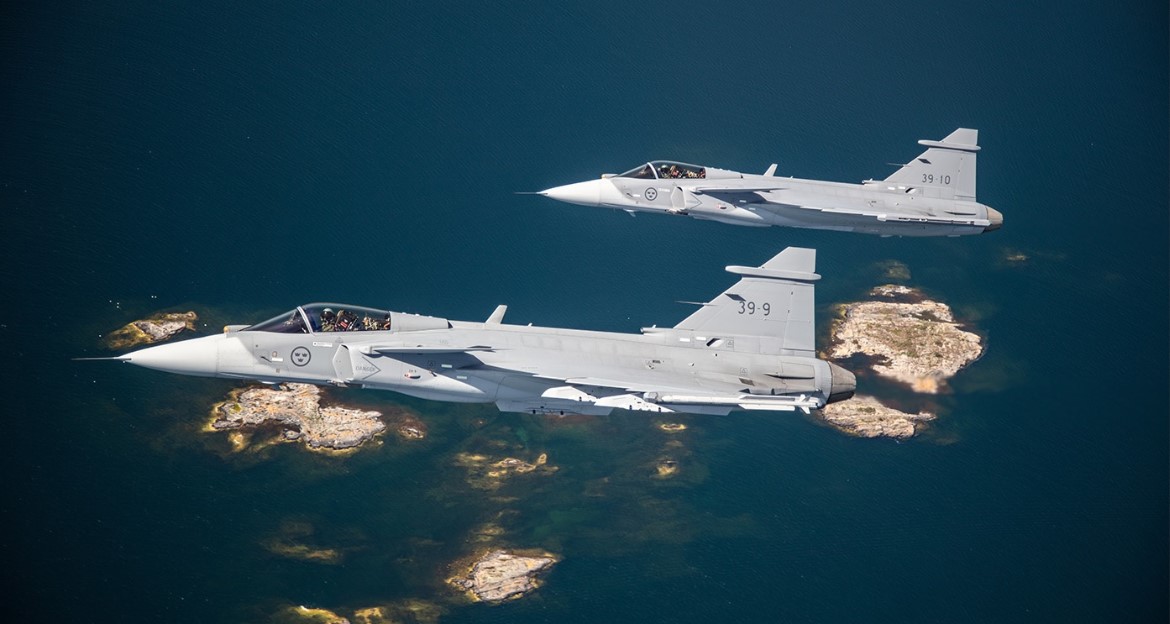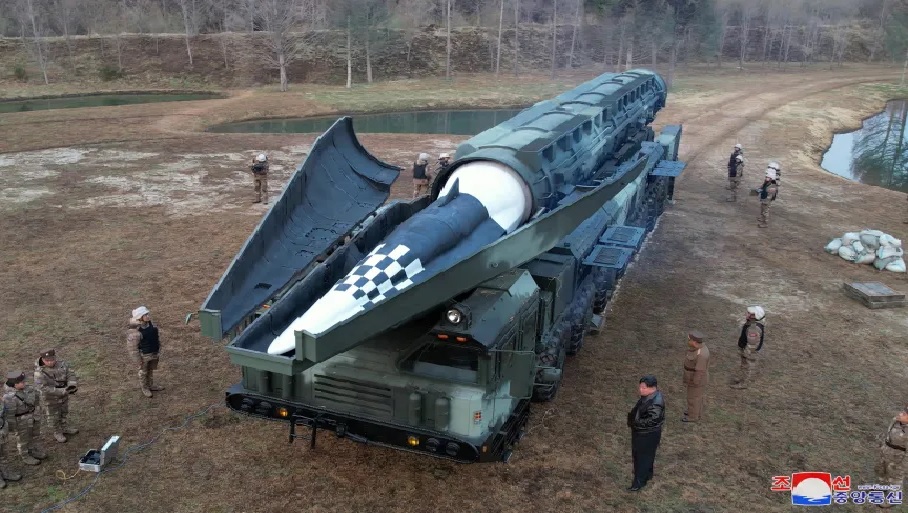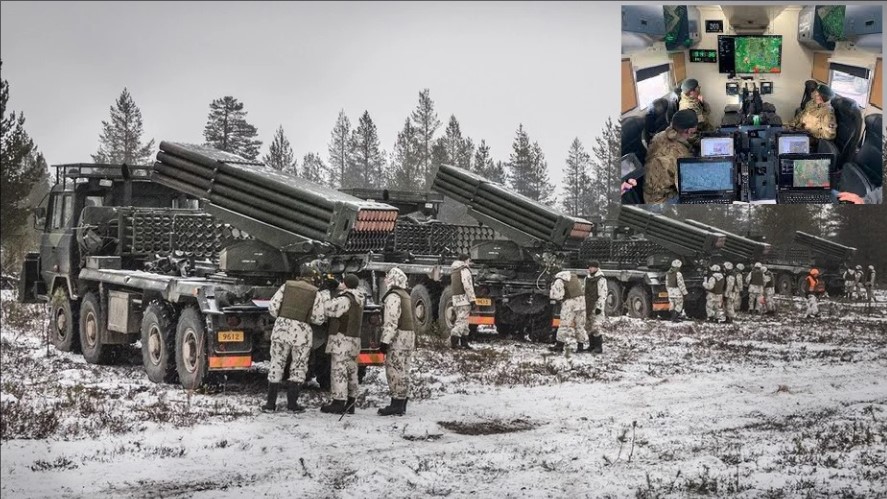World
Defense NewsU.SA recent review by the US Navy has revealed significant delays in nine of its crucial shipbuilding projects, with some falling behind schedule by up to three years.The delivery of the navy's first Columbia-class submarine, vital for strategic deterrence, is now expected to be delayed by 12 to 16 months. Originally slated for launch by October 2027, the submarine, dubbed the "USS District of Columbia," is being constructed by General Dynamics.Similarly, the third Gerald Ford-class aircraft carrier faces a delay of up to 26 months, despite construction beginning in 2022 under manufacturer Huntington Ingalls Industries (HII).The review highlights that the navy's first Constellation-class frigate, being built by Fincantieri Marinette Marine, is already 36 months behind schedule. Additionally, delays of 36 and 24 months are projected for the fourth and fifth blocks of the Virginia-class submarine program, respectively.In total, these delays amount to over 11 years, posing a significant challenge to the navy's efforts to modernize its fleet promptly in preparation for potential conflicts in the Indo-Pacific region.Nickolas Guertin, the Navy's senior acquisition executive, acknowledged the need to address these issues urgently. While plans of action and initiatives are yet to be fully developed, Guertin emphasized the importance of looking ahead, particularly in terms of procuring shipbuilding materials.The delays were largely attributed to disruptions in the supply chain caused by the COVID-19 pandemic. Guertin stressed the necessity of adopting a longer-term perspective in procurement practices to mitigate such challenges in the future.The US Navy faces substantial setbacks in its shipbuilding programs, necessitating immediate attention and proactive measures to address the underlying issues and ensure timely completion of vital projects.
Read More → Posted on 2024-04-03 15:47:08India
Defense NewsIndia & MaldivesMaldives President Mohamed Muizzu has said that Indian military personnel manning the second aviation platform would be withdrawn "within the current month" and reiterated that the entire process would be completed by May 10, a media report said here on Wednesday. Muizzu's statement comes three weeks after the first batch of approximately 25 Indian military personnel stationed in the Maldives manning a helicopter gifted by India departed from the island nation after handing over the operations of the chopper to an Indian civilian crew as agreed ahead of the March 10 deadline.Eighty-eight Indian military personnel were operating two helicopters and a Dornier aircraft which were providing humanitarian and medical evacuation services in this archipelagic nation.Following a high-level meeting in New Delhi on February 2 between the two sides, India agreed to replace its military personnel operating the three aviation platforms in the Maldives by May 10. The first batch left the island nation well before March 10.State-owned Public Service Media reported that Muizzu made the fresh statement during a public meeting. He also reiterated his commitment to preserving Maldives' independence, emphasising that his government is dedicated to fulfilling this promise.The President elaborated that, in line with agreements reached between parties, the withdrawal process of Indian military personnel is already underway.He said that the troops stationed on the second platform will be withdrawn within the current month, while those on the third platform will be withdrawn by May 10, psmnews.mv reported.Muizzu, seen as a pro-China leader, has repeatedly affirmed that no Indian military personnel, not even those in civilian clothing, would be present inside his country after May 10.Last year, Muizzu rode to power on an anti-India stance and within hours of taking oath, demanded India to remove its personnel from the strategically located island nation in the Indian Ocean.Since assuming office as the President in November, Muizzu has travelled to Beijing in January and met China's top leadership to cement the Male-Beijing relationship.Muizzu's government has also signed a defence agreement with the Chinese military under which the People's Liberation Army will assist the Maldivian security and defence forces.Last week, the Maldives Industrial Development Free Zone under the State Trading Organisation and China Harbour Engineering Company Limited signed a Memorandum of Understanding to establish an Agriculture Economic Zone in the Maldives by reclaiming land from Uthuru Thila Falhu for sustainable agriculture purposes.
Read More → Posted on 2024-04-03 15:42:04World
Defense NewsSwedenSaab has secured a significant contract from the Swedish Defence Materiel Administration (FMV) for the procurement of extra LITENING 5 target designator pods, alongside maintenance capabilities. The deal, valued at SEK 390 million, underscores the importance of these pods in modern air combat.LITENING 5 pods play a crucial role in the precise targeting of objectives through laser guidance and tracking. Developed by Rafael Advanced Defense Systems, these pods are utilized on fighter jets to enhance target identification and designation during missions.The latest version of LITENING 5 offers several key features: Improved Sensors: Higher resolution short and medium-wave infrared cameras enhance image quality and target recognition range.All-Weather Capability: Effective functionality during day, night, and adverse weather conditions.Laser Targeting: Ability to designate targets with a laser for precise strikes using laser-guided bombs.Synthetic Aperture Radar: Provides a radar image of the target area with a range of 100 km, aiding pilots in understanding the surroundings.Platform Compatibility: Integration with Gripen and Typhoon aircraft.Saab's provision of maintenance capabilities ensures that the Swedish Armed Forces can maintain these pods domestically. The pods and maintenance capabilities are set to be delivered to FMV in 2026.This recent contract follows a previous order placed by FMV for LITENING 5 pods for Gripen fighter jets, highlighting the increasing importance of these systems in modern air warfare.
Read More → Posted on 2024-04-03 15:38:44World
Defense NewsNorth KoreaNorth Korea has announced the successful testing of a new solid-fuelled hypersonic intermediate-range missile (IRBM), as part of its ongoing efforts to bolster its weapons program. The state-run Korean Central News Agency (KCNA) reported the test, which occurred shortly after South Korea and Japan detected the launch of a missile from North Korea towards the east.Photos released by KCNA showed leader Kim Jong Un alongside military commanders, showcasing the Hwasong-16B missile. Kim praised the missile as a demonstration of North Korea's defense capabilities, stating that Pyongyang has developed nuclear-capable solid-fuel systems for various types of missiles.The Hwasong-16B reportedly flew approximately 1,000km (621 miles) with a peak altitude of 101km (62 miles), before splashing down in the sea between South Korea and Japan. North Korea's focus on solid-fuel weapons is attributed to their ease of concealment, mobility, and quick launch capabilities compared to liquid-propelled weapons.Hypersonic weapons, which travel at speeds exceeding five times the speed of sound and are maneuverable in flight, have been a priority for North Korea's missile development. Analysts suggest that if perfected, these weapons could potentially reach remote US targets in the Pacific, such as Guam.Tensions in the region have heightened since 2022, with North Korea using distractions such as Russia's invasion of Ukraine to accelerate its missile testing. In response, the US and South Korea have intensified their combined training and cooperation with Japan, aiming to strengthen deterrence against North Korean threats.
Read More → Posted on 2024-04-03 15:32:45India
Defense NewsIndiaIndian Air Force (IAF) recently conducted trial runs of emergency landings for fighter jets and helicopters on a newly constructed 3.5-kilometer emergency landing facility in Anantnag, South Kashmir. The exercise, conducted during the night, aimed to assess the facility's readiness and effectiveness in handling various emergency situations.The emergency landing facility, built at a cost of Rs 119 crore, is strategically positioned on the Srinagar-Jammu national highway at Bijbehara. It is intended to support operations during wartime, natural disasters, and other emergencies, including relief material air drops and transportation of stranded individuals. The completion of this facility marks a significant milestone in enhancing the region's emergency response capabilities.Construction on the project began in 2020 and concluded in late 2023 under a joint initiative by the IAF and the Ministry of Road Transport and Highways. It falls under a program aimed at establishing Emergency Landing Facilities (ELFs) at various locations across the country.Located along the busy Srinagar-Jammu National Highway, the emergency landing strip features essential amenities tailored for fighter aircraft. It includes designated parking slots for swift deployment, an air traffic control (ATC) tower for managing flights, and two entry gates on the highway for easy access and egress of aircraft.During the trial runs, extensive security measures were implemented, including deployment of security forces, radars, and CCTV cameras. Traffic on the national highway was diverted to alternative routes between Wanpoh to Sangam to facilitate the exercises.Various aircraft, including Sukhoi fighter jets and Chinook and Mi-17 helicopters, participated in the trial runs. The exercises demonstrated the precision and capability of these aircraft in utilizing the emergency landing facility, highlighting their readiness for emergencies.Authorities suspended all traffic on the highway during the exercises to ensure safety. Additional security personnel were deployed to prevent unauthorized access to the landing facility, emphasizing the importance of safety measures during critical operations.
Read More → Posted on 2024-04-03 15:24:46World
Defense NewsRussiaThe head of Russia's national security council on Wednesday contended that the United States shares blame for the attack by gunmen on a Moscow concert hall that killed 144 people, even though a branch of the Islamic State group has claimed responsibility. Since the March 22 attack at the Crocus City Hall, the deadliest on Russian soil in two decades, Russian officials including President Vladimir Putin have repeatedly claimed, without presenting evidence, that it was organized by Ukraine, which has been fighting a Russian invasion for more than two years.An affiliate of the Islamic State claimed responsibility for the attack and Kyiv has consistently denied involvement."They are trying to impose on us that the terrorist act was committed not by the Kyiv regime, but by supporters of radical Islamic ideology, perhaps members of the Afghan branch of IS," security council head Nikolai Patrushev said at a meeting in the Kazakhstan capital Astana of security councils of the Shanghai Cooperation Organization.The SCO is a nine-country regional security and economic bloc that includes China, India and Iran."However, it is much more important to quickly establish who is the customer and sponsor of this monstrous crime. Its traces lead to the Ukrainian special services. But everyone knows that the Kyiv regime is not independent and is completely controlled by the United States," Patrushev said.Four suspected gunmen were captured the day after the attack in the Bryansk region, which borders Ukraine. Putin and other officials claim that the gunmen had arranged for passage into Ukraine. Six other suspected accomplices have also been arrested.The attack came two weeks after the United States Embassy in Russia issued a warning that it was monitoring reports of planned terrorist attacks on public targets. The US State Department said information about the planned attacks was passed on to Russian officials.Putin spokesman Dmitry Peskov on Wednesday declined comment in a conference call on a report in the Washington Post that US officials had specifically identified Crocus City Hall as a potential target, saying that was a matter for security services.Also Wednesday, the Russian prosecutor-general's office sent information requests to the US, Germany, France and Cyprus over Western countries' potential involvement in terrorist attacks on Russia, state news agency Tass reported.
Read More → Posted on 2024-04-03 15:21:44India
Defense NewsIndiaThe Indian Air Force (IAF) and Ministry of Defence (MoD) are under scrutiny following their acquisition of Bharath Panther Crash Fire Tenders (CFTs) from a Noida-based MSME firm. Critics online are questioning the authenticity of the purchase, pointing out striking similarities between the Bharath Panther and the Rosenbauer Panther 6x6 CFT manufactured by Rosenbauer International, an Austrian company.The controversy stems from the undeniable parallels between the two vehicles. Both the Bharath Panther and the Rosenbauer Panther share a 6x6 configuration and reportedly utilize the same Volvo Penta D-16 engine. This has led to concerns about whether the Bharath Panther is genuinely an indigenous product or merely a rebadged import.The IAF contends that the contract with the Noida-based firm ensured swift delivery of the CFTs within 14 months, despite ongoing global supply chain disruptions. This rapid procurement process is seen as a success for Indian defence manufacturing.However, critics online highlight a recurring issue within India's defence sector: the potential for rebranding foreign products as domestic creations. Such practices undermine the "Make in India" initiative and raise doubts about the transparency of procurement processes.To address these concerns, the IAF and MoD could release detailed specifications of the Bharath Panther, particularly focusing on its engine and chassis origins. Additionally, fostering genuine technological innovation within the Indian defence industry is crucial to achieving greater self-reliance and avoiding future accusations of rebadging.
Read More → Posted on 2024-04-03 15:18:15World
Defense NewsSpainRheinmetall has secured another substantial order from the Spanish government, valued in the higher double-digit million euro range. The contract entails supplying the Spanish army with a total of 104,000 mortar rounds in various calibres (60mm, 81mm, and 120mm) by the end of 2025. This agreement, finalized in the first quarter of 2024, marks the second such deal and includes an option for extending the contract by two additional years.These mortar rounds are designated for use by the Spanish army's infantry units, offering variants such as high explosive, smoke, and illumination ammunition. Depending on the calibre and specific mortar system employed, these rounds exhibit ranges between 2.59 km (for 60mm rounds) and 8.25 km (for 120mm rounds).Rheinmetall's mortar ammunition boasts extended range, improved precision, and enhanced effectiveness on target. These attributes enable forces to engage targets effectively, particularly in challenging terrains or urban environments.This latest order underscores Rheinmetall's prominent position as a systems supplier in the realm of steep-fire systems. The company, recognized as one of the world's largest ammunition manufacturers, recently clinched a separate contract worth over EUR 200 million to provide the Spanish army with 155mm artillery ammunition.
Read More → Posted on 2024-04-03 15:13:08India
Defense NewsIndiaIn a recent encounter in central India, at least 13 Maoist insurgents lost their lives during a clash with security forces, as confirmed by the police on Wednesday. The skirmish occurred in a remote forest area within Chhattisgarh state's Bijapur district on Tuesday.According to local police chief P. Sundarraj, the confrontation between security personnel and the guerrillas persisted for approximately 14 hours. Sundarraj mentioned that authorities managed to seize a considerable arsenal including rifles, machine guns, grenade launchers, and ammunition from the insurgents.As of now, the identities of the deceased Maoists are yet to be determined. However, Sundarraj noted that among the casualties, three were women.This incident marks a part of the ongoing conflict between government forces and Maoist rebels in the region. In total, this year alone, over 50 Maoists have been killed, with 46 casualties reported in Chhattisgarh and four in Maharashtra state, according to police records.India has maintained a significant deployment of security personnel to tackle the Maoist insurgency within the "Red Corridor," an area spanning central, southern, and eastern states. Despite its historical significance dating back to 1967, the size of the insurgent-dominated region has been gradually shrinking.The Maoist insurgents, also known as Naxalites, claim to fight for the rights of the rural poor. However, the Indian government has undertaken extensive measures including substantial investments in infrastructure development in remote regions. As a result, the insurgency's reach has reportedly been contained to 45 districts in 2023, down from 96 in 2010.The annual count of rebel casualties has significantly decreased over the past decade, according to official figures released by the government.With India's general election scheduled to commence on April 19, the recent clash underscores the ongoing security challenges faced by the country in certain regions plagued by insurgency.
Read More → Posted on 2024-04-03 15:09:24Space & Technology
Space NewsWorld For over two decades, the International Space Station (ISS) has stood as a testament to human ingenuity and collaboration in the realm of space exploration. As it approaches the twilight of its operational life, the question of what comes next looms large. In this comprehensive exploration, we delve into the challenges facing the ISS, the intricate plans for its retirement, and the exciting prospects that await in the era beyond. The ISS: A Legacy of ExplorationThe Birth of a Marvel:The journey of the International Space Station began on November 20, 1998, with the launch of its first segment. Over the years, this marvel of engineering has grown from its modest beginnings into a sprawling complex spanning over 109 meters - longer than a football pitch. Continuously occupied since November 2, 2000, the ISS has served as a beacon of scientific discovery, hosting astronauts from 21 countries and enabling ground-breaking research across various disciplines.Scientific Triumphs:From unravelling the mysteries of Alzheimer's disease and cancer to studying our planet's ecosystems from afar, the ISS has been at the forefront of cutting-edge research. Its microgravity environment has provided scientists with a unique platform to conduct experiments, leading to breakthroughs in medicine, materials science, and fundamental physics. Challenges and Aging InfrastructureTesting Resilience:Despite its remarkable achievements, the ISS has not been immune to the rigors of space. Micro-fractures, thruster misfires, coolant leaks, and communication dropouts have presented formidable challenges. Additionally, the station's aging infrastructure, subjected to the harsh realities of space, has raised concerns about its long-term viability.Diplomatic Tensions:Compounding these challenges are the geopolitical tensions that have cast a shadow over the ISS's future. Tensions between Russia and other partner countries, including the United States, Europe, Japan, and Canada, have strained international cooperation. Roscosmos, Russia's space agency, has hinted at the possibility of withdrawing from the ISS after 2024, adding another layer of uncertainty to its future. Retirement PlanA Controlled Farewell:In response to the challenges facing the ISS, plans are underway for its retirement. Most international partners have committed to maintaining the station until early 2031, with a controlled deorbit planned thereafter. This carefully orchestrated descent will culminate in the ISS's re-entry into Earth's atmosphere over the remote Point Nemo in the South Pacific, ensuring a safe and controlled end to its operational life. Legacy and Transition:As the ISS approaches its retirement, its legacy as a symbol of international cooperation and scientific discovery will endure. However, the transition to a new era of space exploration is already underway. Private companies and space agencies alike are laying the groundwork for a future where commercial space stations will play a central role in humanity's quest for the stars. Why Replace the ISS ?Aging Infrastructure and Obsolescence:The need to replace the ISS is driven by practical considerations. The station's aging infrastructure, subjected to the harsh environment of space, is showing signs of wear and tear. Components are reaching the end of their operational life, while advances in technology have rendered certain systems obsolete.Meeting the Challenges Ahead:Furthermore, the ISS was not designed to last indefinitely. As it approaches the limits of its operational lifespan, the risks associated with its continued operation become increasingly apparent. By proactively planning for its retirement, space agencies can ensure a smooth transition to the next phase of human space exploration. Cracks, Leaks, and InnovationsStructural Integrity:Despite its challenges, the ISS has demonstrated remarkable resilience over the years. Modules like ESA's Columbus laboratory have weathered the rigors of space without major issues. However, leaks in Russia's Zvezda module and degradation of solar arrays highlight the need for ongoing maintenance and innovation. Innovations for the Future:Innovations in materials science and construction techniques hold the key to the future of space exploration. Advanced materials that are resistant to radiation and micro-fractures will be essential for building the next generation of space stations. Additionally, advancements in robotics and autonomous systems will enable more efficient maintenance and repair operations in the unforgiving environment of space. What Comes Next ?The Dawn of Commercial Space Stations:As the era of government-operated space stations draws to a close, the stage is set for the rise of commercial space stations. Companies like Axiom Space, Blue Origin, Northrop Grumman, and Voyager Space are leading the charge, with ambitious plans to build and operate their own space habitats. These commercial stations promise to democratize access to space and unlock new opportunities for scientific research, tourism, and commerce. Let’s learn a little more about these: Axiom Space: Pioneering Commercial Space StationsVisionary Leadership:Axiom Space, led by former NASA ISS Program Manager Michael Suffredini, has emerged as a key player in the transition to commercial space stations. With a team comprised of seasoned space industry veterans, Axiom is at the forefront of designing and building the next generation of space habitats.A Modular Approach:Axiom's approach to space station development is modular, allowing for flexibility and scalability. The company plans to attach modules to the ISS initially, leveraging existing infrastructure before transitioning to an independent space station. This incremental approach minimizes risk while maximizing the potential for innovation and expansion.Enhancing the Astronaut Experience:One of Axiom's key goals is to enhance the astronaut experience in space. From comfortable crew quarters to state-of-the-art research facilities, Axiom's space station will prioritize the well-being and productivity of its occupants. By creating a more inviting and conducive environment for living and working in space, Axiom aims to revolutionize human spaceflight. Blue Origin: Transforming Space Tourism and ResearchBold Ambitions:Blue Origin, founded by Amazon billionaire Jeff Bezos, has set its sights on transforming space tourism and research with its ambitious Orbital Reef project. Building on its success with suborbital space tourism, Blue Origin aims to establish a multi-purpose space station that serves as a hub for scientific research, commercial activities, and even entertainment.Zoned Design:Orbital Reef's innovative design features distinct zones for different activities, ensuring that astronauts have dedicated spaces for work, rest, and leisure. By creating a more comfortable and efficient living environment in space, Blue Origin hopes to attract a diverse range of users, from researchers and astronauts to tourists and entertainers.Sustainability and Longevity:Blue Origin is committed to sustainability and longevity in space. Orbital Reef will be equipped with advanced environmental control systems and efficient resource management technologies to minimize its environmental footprint. By prioritizing sustainability, Blue Origin aims to ensure that Orbital Reef remains a viable platform for exploration and innovation for years to come. Northrop Grumman: Building on a Legacy of Space ExplorationHeritage of Excellence:Northrop Grumman, a leading aerospace and defense contractor, brings decades of experience and expertise to the table. Drawing on its heritage of excellence in space exploration, Northrop Grumman is poised to deliver a modular space station that combines versatility, reliability, and performance.Scalable Solutions:Northrop Grumman's space station concept is designed to be scalable, allowing for growth and adaptation to meet evolving needs and demands. The company plans to leverage its existing technologies and capabilities to deliver a cost-effective and efficient solution for space habitation and research.Collaboration and Partnership:Northrop Grumman recognizes the importance of collaboration and partnership in the development of space infrastructure. By working closely with government agencies, international partners, and commercial entities, Northrop Grumman aims to ensure that its space station meets the needs of a diverse range of users and stakeholders. Voyager Space: Pushing the Boundaries of Space ExplorationInnovative Solutions:Voyager Space, in partnership with Nanoracks, is pushing the boundaries of space exploration with its innovative Starlab concept. This fully operational space station offers a comprehensive solution for scientific research, manufacturing, and habitation in space, setting a new standard for space habitats.Human-Centered Design:Starlab prioritizes human-centered design, with spacious living quarters, state-of-the-art research facilities, and advanced amenities. By focusing on the needs and preferences of astronauts, Voyager Space aims to create a space station that enhances productivity, comfort, and well-being in space.Global Collaboration:Voyager Space recognizes the importance of global collaboration in advancing space exploration. By fostering partnerships with space agencies, research institutions, and commercial entities around the world, Voyager Space aims to create a vibrant ecosystem of space-based activities that benefit humanity as a whole. A New Frontier:With the retirement of the ISS, humanity stands on the threshold of a new frontier in space exploration. Commercial space stations will pave the way for a vibrant ecosystem of space-based activities, from research and manufacturing to tourism and beyond. As we look to the stars, the legacy of the ISS will endure as a testament to human curiosity, ingenuity, and cooperation. This expanded version of the article provides a more detailed exploration of the challenges facing the ISS, the plans for its retirement, and the exciting prospects that lie ahead in the era of commercial space stations.
Read More → Posted on 2024-04-03 08:38:11World
Defense NewsEuropeElbit Systems, a leading defense technology company, has secured a significant contract with an undisclosed European nation to upgrade its artillery capabilities. The agreement involves the integration of Elbit's Command, Control, Communications, Computers, and Intelligence (C4I) suite into the country's 155mm artillery battalions.What Is C4I Suite ?The C4I suite, which includes the Torch-X Fires application, is designed to enhance the digital fire capabilities of the artillery units. Torch-X Fires enables effective coordination across different military forces, facilitating quick and precise planning and execution of operations. The suite's open system architecture allows for the integration of third-party applications and accommodates future growth.In addition to Torch-X Fires, the suite features the E-LynX Software Defined Radio, ensuring fast, resilient, and secure communications with simultaneous voice, data, and video capabilities in various terrains.Haim Delmar, General Manager of Elbit Systems C4I & Cyber division, emphasized the importance of this contract in empowering the customer to command their artillery battalions more effectively. The integration of Elbit's C4I solution is expected to enhance operational efficiency and maximize the performance of artillery platforms through a fully digitized process.Furthermore, the agreement facilitates the integration of the customer's artillery forces with Elbit Systems' Networked Warfare Systems, ensuring seamless interoperability with other assets within the nation's army.This contract marks the second order for Elbit's C4I suite from a European country within a year, underscoring the company's expertise and the value of its solutions in modernizing military capabilities.
Read More → Posted on 2024-04-03 08:23:37World
Defense NewsIndonesia & FranceIndonesia has finalized a deal with France's Naval Group for the procurement of two Scorpene-class attack submarines, announced the company on Tuesday. This agreement, which stems from a defense cooperation pact signed in 2021, marks a significant step in enhancing Indonesia's maritime defense capabilities.According to Naval Group, the submarines will be constructed at the PT PAL shipyard in Indonesia. The diesel-electric vessels boast a capacity of carrying 18 torpedoes and missiles, providing a boost to the Indonesian Navy's operational capabilities.Naval Group emphasized that the transfer of technological expertise will accompany the construction process. Additionally, the management, operation, and maintenance of the submarines will be carried out by Indonesians, contributing to the creation of thousands of skilled jobs in the country.Pierre Eric Pommellet, CEO of Naval Group, expressed his satisfaction with the partnership, highlighting its importance in strengthening the strategic alliance between Indonesia and France. He emphasized that the submarines will play a crucial role in bolstering Indonesia's maritime sovereignty and supporting the country's naval superiority in the region.Furthermore, the collaboration between Naval Group and PT PAL is expected to foster the development of Indonesia's defense industry, particularly in preparing for future naval warfare scenarios.This procurement adds to Indonesia's recent defense acquisitions from France, including the purchase of Dassault-made Rafale fighter jets in 2022. The broader defense partnership between the two countries is seen as a response to evolving strategic dynamics in the Indo-Pacific region, including the establishment of the AUKUS alliance by the United States, Britain, and Australia in 2021.Overall, the acquisition of these submarines underscores Indonesia's commitment to enhancing its maritime security and defense capabilities through strategic partnerships with international allies.
Read More → Posted on 2024-04-03 08:18:58World
Defense NewsIndiaTaiwanese soldiers stationed on Erdan island, part of the Kinmen Island chain, have been placed on heightened alert following provocations by Chinese civilian drones. The island, situated just five kilometers off the Chinese coast, faces ongoing military pressure from Beijing, which claims Taiwan as its own territory.The Taiwan military has reported increased activity of Chinese civilian drones surveilling and harassing its troops. In response, soldiers on Erdan island have been instructed to increase vigilance in surveillance. Additionally, the Kinmen Defence Command announced plans to enhance drone training for soldiers, including appropriate countermeasures against potential threats.Recent incidents include the posting of a video on YouTube allegedly showing drone footage of Taiwanese soldiers and military facilities on Erdan island. The caption accompanying the video claimed that Taiwanese soldiers were "scared away by a Chinese drone."This isn't the first time Taiwanese soldiers have encountered such drones. In 2022, soldiers on Kinmen Island shot down an unidentified civilian drone following a visit to Taipei by then-US House Speaker Nancy Pelosi.These incidents reflect a broader pattern of "grey zone" actions, tactics that fall short of outright acts of war, which have intensified since the election of President Tsai Ing-wen in 2016. Tensions have further escalated since January, following the election of Tsai's deputy, Lai Ching-te, and amid an ongoing dispute between China and Taiwan over a fatal boat incident.Taiwan remains vigilant in the face of these provocations, emphasizing the need for heightened surveillance and preparedness to respond to potential threats.
Read More → Posted on 2024-04-03 08:13:06India
Defense NewsIndiaIndia's External Affairs Minister, S Jaishankar, asserted today that India's bid for permanent membership in the United Nations Security Council (UNSC) is gaining momentum. Speaking at an interaction in Rajkot, Gujarat, Jaishankar emphasized the need for concerted efforts to secure this position.Jaishankar highlighted the current composition of the UNSC, dominated by five permanent members since its inception, despite a significant increase in the number of independent countries globally. He noted the growing global sentiment favoring India's inclusion as a permanent member.Acknowledging the challenges ahead, Jaishankar emphasized the necessity of diligent efforts. He mentioned the collaborative proposal by India, Japan, Germany, and Egypt to the UN, indicating a step forward in the process.Regarding the sensitive case of Ariha Shah, a baby girl separated from her Indian parents in Germany, Jaishankar assured that the matter is being closely monitored. Expressing dissatisfaction with the situation, he affirmed India's commitment to ensuring the child's upbringing in accordance with her cultural heritage.Reflecting on India's democratic prowess, Jaishankar underscored the country's resilience amid the COVID-19 pandemic, maintaining a commendable growth rate. He highlighted India's potential as a global economic powerhouse, supported by its technological capabilities and advancements in social sectors.Jaishankar reiterated the world's expectations of India's role in addressing global challenges, emphasizing the need for India to leverage its position as the fifth-largest economy with a vast population to contribute positively to the international community.
Read More → Posted on 2024-04-03 07:57:57World
Defense NewsGermanyGermany has pledged to fund 180,000 rounds of artillery shells as part of a Czech-led effort to provide Ukraine with ammunition. Reuters reported the total cost of Germany's contribution to be EUR 576 million, signaling a substantial financial commitment to bolster Ukraine's defense capabilities against Russian forces.This announcement comes amidst Germany's ongoing support for Ukraine, particularly in light of delays in military aid from the US and under-delivered EU pledges. These promises aimed to provide a million shells to aid Kyiv in sustaining its defense along the extensive 1,000-kilometer front line.Artillery fire holds a critical role in the conflict dynamics between Ukraine and Russia, underscoring the significance of this assistance.Last month, German Defence Minister Boris Pistorius unveiled a EUR 478 million aid package for Ukraine. Notably, this package did not initially include support for the Czech ammunition initiative, sparking discussions on Germany's stance and contributions.During a press conference at the Contact Group on Ukraine's Defence on 19 March, Pistorius emphasized the substantial scope of the aid. This includes 10,000 artillery shells, 100 armored infantry vehicles, 100 transport vehicles, and the planned purchase of 180,000 artillery shells through the Czech-led initiative.A spokesperson from the German Defence Ministry highlighted that the combined value of both support measures exceeds one billion euros, marking a significant milestone in Germany's support for Ukraine amid the ongoing conflict.
Read More → Posted on 2024-04-03 07:49:15World
Defense NewsIsrael & IranFor decades, Israel and Iran have fought a shadow war across the Middle East, trading attacks by land, sea, air and in cyberspace.Iran has largely used foreign proxies to strike Israeli interests, while targeted assassinations of Iranian military leaders and nuclear scientists have been a key part of Israel's strategy.Israel's strike in the Syrian capital, Damascus, that killed three top Iranian commanders Monday was the most brazen attack in years, raising fears of a wider confrontation. That would be particularly dangerous in a region already in turmoil on multiple fronts, including Israel's war in the Gaza Strip, cross-border skirmishes between Israel and the Lebanese militant group Hezbollah and attacks by Yemen's Houthi militia against Western interests in the Red Sea. An escalation between Israel and Iran would also risk further entangling the United States, given the presence of U.S. troops in the region.Here are some key moments in the years-long conflict.January 2020: A Major TargetThe assassination of Gen. Qassem Soleimani, commander of the foreign-facing arm of Iran's Revolutionary Guard, in a U.S. drone strike in Baghdad was greeted with satisfaction in Israel.Iran hit back by attacking two bases in Iraq that housed U.S. troops with a barrage of missiles, injuring about 100 U.S. military personnel.U.S. officials accused Soleimani of causing the deaths of hundreds of soldiers during the Iraq War. They also said that he was behind destabilizing Iranian activities throughout the Middle East and that he was accused of plotting attacks against U.S. embassies and Israeli targets.The general had built a network of allied militias to defend Iran's interests across the Middle East and to counter the United States and Israel.October 2023: Tit-for-Tat Strikes Before Oct. 7Iran and Israel reportedly carried out a number of covert attacks and counterattacks in the years following Soleimani's death.Israel killed Iran's top nuclear scientist, Mohsen Fakhrizadeh, in November 2021, and followed up with the assassination of a Revolutionary Guard commander, Col. Hassan Sayyad Khodaei, in May 2022.In July 2021, an oil tanker managed by an Israeli-owned shipping company was attacked off the coast of Oman, killing two crew members, according to the company and three Israeli officials.Two of the officials said the attack appeared to have been carried out by several Iranian drones that crashed into living quarters underneath the ship's bridge. Iran did not explicitly claim or deny responsibility, but a state-owned TV channel described the attack on the ship as a response to an Israeli strike in Syria.Once Israel's bombardment of Gaza began after the Hamas-led attacks on Oct. 7, Iranian-backed militias stepped up their attacks.December 2023: Another High-Profile KillingAt the end of last year, Iran accused Israel of killing a high-level military figure, Brig. Gen. Seyed Razi Mousavi, in a missile strike outside Damascus. A senior adviser to the Revolutionary Guard, Mousavi was described as having been a close associate of Soleimani and was said to have helped oversee the shipment of arms to Hezbollah.Israel, adopting its customary stance, declined to comment directly on whether it was behind Mousavi's death.January 2024: Back-and-Forth Attacks Ratchet UpThe Pentagon launched a drone strike in Baghdad that killed a senior figure in an Iran-linked militant group.The attack came days after an explosion in a suburb of Beirut that killed Saleh Arouri, a Hamas leader, along with two commanders from that group's armed wing. The blast was the first such assassination of a top Hamas official outside the West Bank and Gaza in recent years.Officials from Hamas, Lebanon and the United States ascribed the attack to Israel, which did not publicly confirm involvement.Arouri was the most senior Hamas figure to be killed since Israel vowed to destroy the organization after Oct. 7.Hezbollah, which receives major support from Iran, stepped up its assaults on Israel after Arouri's death. Israel's military hit back at Hezbollah in Lebanon, killing a number of the group's commanders.Later in January, Iran accused Israel of launching an airstrike on Damascus. A number of senior Iranian military figures were killed, including the head of intelligence in Syria for the overseas arm of the Revolutionary Guard and his deputy, according to the Iranian news media and an Israeli defense official.Then, a drone strike by an Iran-backed militia killed three U.S. service members and injured at least 34 others in Jordan. Ten days later, U.S. forces launched a retaliatory drone strike in Baghdad that killed a senior militia leader that U.S. officials blamed for the attacks on U.S. personnel.February 2024: Further Strikes by IsraelThe United States' retaliatory airstrikes against Iran-backed militias appeared to temper Iran's actions.Israel was blamed for a number of attacks in Syria and Lebanon. In February, Syrian state news media said Israel was behind an airstrike on a residential building in Damascus that killed two people.The Israeli military declined to comment on that strike, though it has acknowledged hundreds of past strikes on Iran-linked targets in Syria.But the Israeli military did acknowledge a strike in southern Lebanon in February that it said killed a Hezbollah commander, and in March, it killed a senior Hamas operative in an airstrike also in southern Lebanon.March 2024: A Tense AtmosphereAn Israeli drone strike targeted a car in southern Lebanon, killing at least one person. Israel's military said it had killed the deputy commander of Hezbollah's rocket and missile unit. Hezbollah acknowledged the death of a man, Ali Abdulhassan Naim, but did not provide further details.The same day, airstrikes killed soldiers near Aleppo, in northern Syria, in what appeared to be one of the heaviest Israeli attacks in the country in years.Those strikes killed 36 Syrian soldiers, seven Hezbollah fighters and a Syrian from a pro-Iran militia, according to the Syrian Observatory for Human Rights, a British-based group that tracks Syria's civil war.Israel's military did not claim responsibility. However, the country's defense minister, Yoav Gallant, wrote on social media, "We will pursue Hezbollah every place it operates and we will expand the pressure and the pace of the attacks."Three days later, on Monday evening, Israeli warplanes struck the building in Damascus in the attack that killed the three top Iranian commanders.This article originally appeared in The New York Times.
Read More → Posted on 2024-04-03 07:45:34India
Defense NewsIndiaAround 14,000 new Kashmiri Pandit migrant voters have registered for the three Lok Sabha seats in the valley, bringing the total figure to 1.13 lakh, as per the Relief and Rehabilitation Department. This surge marks a notable increase since the 2019 Lok Sabha polls when approximately 99,000 migrant Kashmiri Pandits were registered as voters, with the BJP securing 86% of their votes.Migrant Pandits are those who fled the Kashmir valley during the mass militancy of the 1990s. According to government figures, 60,000 families migrated due to militant violence, including 40,142 Hindu families, 2,684 Muslim families, and 1,730 Sikh families.Relief and Rehabilitation Commissioner Arvind Karwani urged migrant voters to participate in large numbers and exercise their democratic right. Facilities have been arranged, with authorized officers distributing and attesting M-forms on the spot.The Relief and Rehabilitation Department has been conducting special awareness camps for Kashmiri migrants, particularly Pandits, in various locations like Jammu and Udhampur, to inform them about the voting scheme allowing them to cast votes from outside the Kashmir valley.Migrant voters have two options: filling out an M-form to vote in special polling booths or casting votes through postal ballots using Form-12C. Twenty-six polling stations, including 21 in Jammu, four in Delhi, and one in Udhampur, have been set up for Kashmiri Pandit migrant voters.Special awareness drives are underway in migrant camps and non-camp areas with concentrations of Kashmiri migrants in Jammu and Delhi to ensure maximum participation.With these developments, the electoral landscape for the upcoming Lok Sabha polls reflects the growing engagement of Kashmiri Pandit migrant voters in the democratic process.
Read More → Posted on 2024-04-03 07:42:14World
Defense NewsTaiwanA devastating earthquake measuring 7.3 on the Richter scale struck the east coast of Taiwan at 7:58 am on Wednesday, resulting in significant loss of life and widespread damage. According to reports, at least seven people have lost their lives, while 711 others have been reported injured.The earthquake's epicenter was located approximately 25 kilometers south of Hualien, a county in eastern Taiwan, with its impact felt across the entire island. Buildings collapsed, and residents ran in panic as the ground shook violently for nearly a minute.Among the casualties, three hikers lost their lives due to falling rocks at the Dekalun Trail in Taroko National Park, while a truck driver was killed when his vehicle was crushed by rocks near a tunnel in Hualien. In addition, more than 40 people, mostly tourists, were injured in Taroko Park, and hundreds were evacuated.In various parts of Taiwan, at least 50 individuals were injured either by falling objects or as a result of the earthquake's impact. Search and rescue operations are underway, with 22 people rescued from a collapsed eight-storey building in Hualien, while five remain trapped and one person is reported missing.The earthquake caused extensive damage to infrastructure, with reports of damaged walls, falling bricks, and debris across the island. A total of 125 buildings and houses have been reported damaged, including seven houses in New Taipei that collapsed due to foundation damage.Taiwan's transportation network also suffered, with several mountain sectors of highways closed due to partial collapses or blockages from fallen rocks. However, Taiwan's high-speed rail services remain unaffected, with no reports of damage or injuries.The earthquake's impact extended beyond Taiwan, with disruptions in the semiconductor industry, as major companies like Taiwan Semiconductor Manufacturing Co (TSMC) evacuated factory areas and partially shut down operations as a preventive measure. Other companies such as Powerchip Semiconductor Manufacturing Co and Innolux also took similar precautions.In response to the disaster, Taiwan's President Tsai Ing-wen has called for military support in rescue missions, while Vice-President William Lai Ching-te urged the public to remain calm and cautious. However, there has been no confirmation regarding the postponement of the upcoming presidential inauguration scheduled for May 20.The earthquake marks the most significant seismic event in Taiwan since 1999, with its impact felt in neighboring regions such as Japan and mainland China. Authorities have issued tsunami warnings, with aftershocks of up to magnitude 7 expected in the coming days, according to Taiwan's Central Weather Bureau.
Read More → Posted on 2024-04-03 07:32:36India
Defense NewsRussiaRussia has made significant strides in aerial combat technology, with the United Aircraft Corporation (UAC) securing a patent for an innovative air-launched attack drone designed for the Su-57 fighter jet. This development could potentially change the landscape of aerial warfare tactics.While details of the drone remain classified, leaked patent documents shed light on its capabilities. The drone is intended to augment the Su-57's range and combat effectiveness, with speculation suggesting it could be used for high-risk missions.One notable feature of the drone is its advanced autonomy, which operates in two modes. In the first mode, the drone can autonomously identify and engage targets based on preset criteria. In the second mode, it acts as a scout, relaying tactical information to the Su-57 pilot for decision-making.The drone is equipped with a modular warhead system, allowing it to be fitted with various payloads tailored to specific mission requirements. These payloads can include high-explosive or hybrid warheads, enhancing the drone's versatility.Although initially designed for the Su-57, there is potential for this technology to be adapted for other Russian combat aircraft. Such a move could significantly enhance Russia's airpower capabilities.Russia's development of this air-launched attack drone represents a notable advancement in aerial combat technology, with potential implications for future military operations.
Read More → Posted on 2024-04-03 07:21:29Space & Technology
Space NewsIndiaCoimbatore-based Lakshmi Machine Works Advanced Technology Centre (LMW ATC) has recently completed the delivery of a 5-meter diameter Ogive Payload Fairing to the Indian Space Research Organisation (ISRO) for the GSLV MK-III. This payload fairing, constructed by LMW's metallic and composites divisions, plays a crucial role in transporting satellites into orbit. Made from carbon composites, it stands at a height of 10.75 meters.Sanjay Jayavarthanavelu, the Chairman and Managing Director of LMW, officially handed over the hardware documents to ISRO Chairman S Somanath. The unveiling ceremony of the payload fairing was conducted virtually, showcasing the collaboration between LMW and ISRO in advancing space technology.LMW-ATC's contributions extend beyond the Ogive Payload Fairing. In February, the company delivered a "4-meter diameter hat stiffened composite equipment bay shroud" essential for the upcoming Gaganyaan Mission. Additionally, LMW-ATC undertook assembly, structural testing, and non-destructive testing of composite tubular members for the Inter Tank Structure of the C-25 cryogenic upper stage, which is vital for Chandrayaan-3.These developments underscore LMW's commitment to supporting India's space exploration endeavors through the provision of high-quality aerospace components and technology.
Read More → Posted on 2024-04-03 07:15:17Search
Top Trending
-
 Agneepath Scheme replaced with Sainik Samman Scheme 2024, Defence Minister Rajnath Singh Relaunched Agniveer Scheme
Agneepath Scheme replaced with Sainik Samman Scheme 2024, Defence Minister Rajnath Singh Relaunched Agniveer Scheme
-
 Death in Dhaka: CIA Links Surface After Putin Shielded Modi During SCO Meet
Death in Dhaka: CIA Links Surface After Putin Shielded Modi During SCO Meet
-
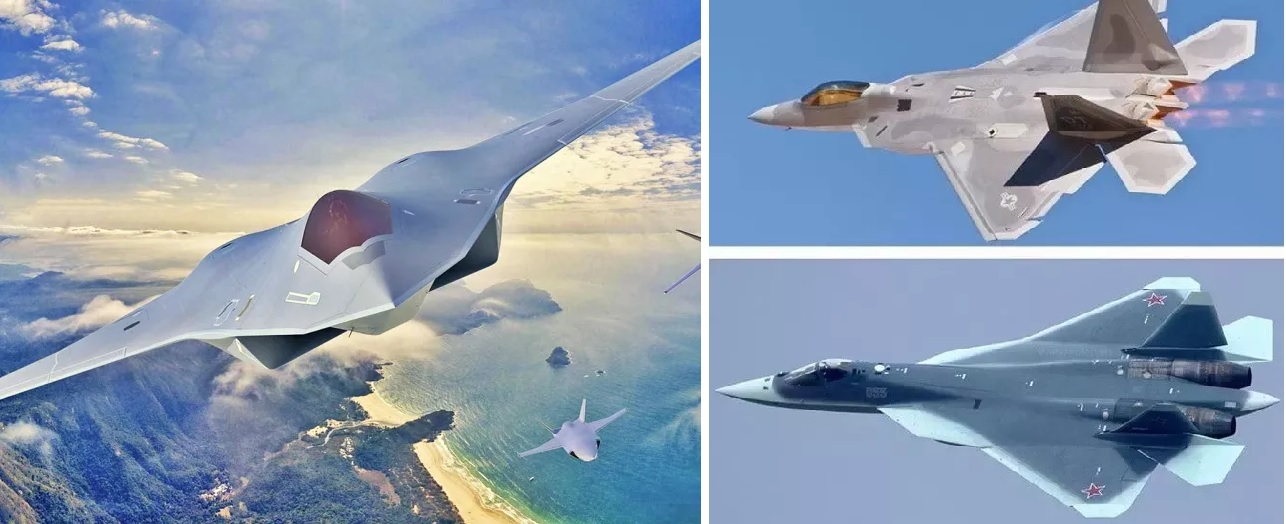 Key Differences Between 5th vs. 6th Generation Fighter Jets
Key Differences Between 5th vs. 6th Generation Fighter Jets
-
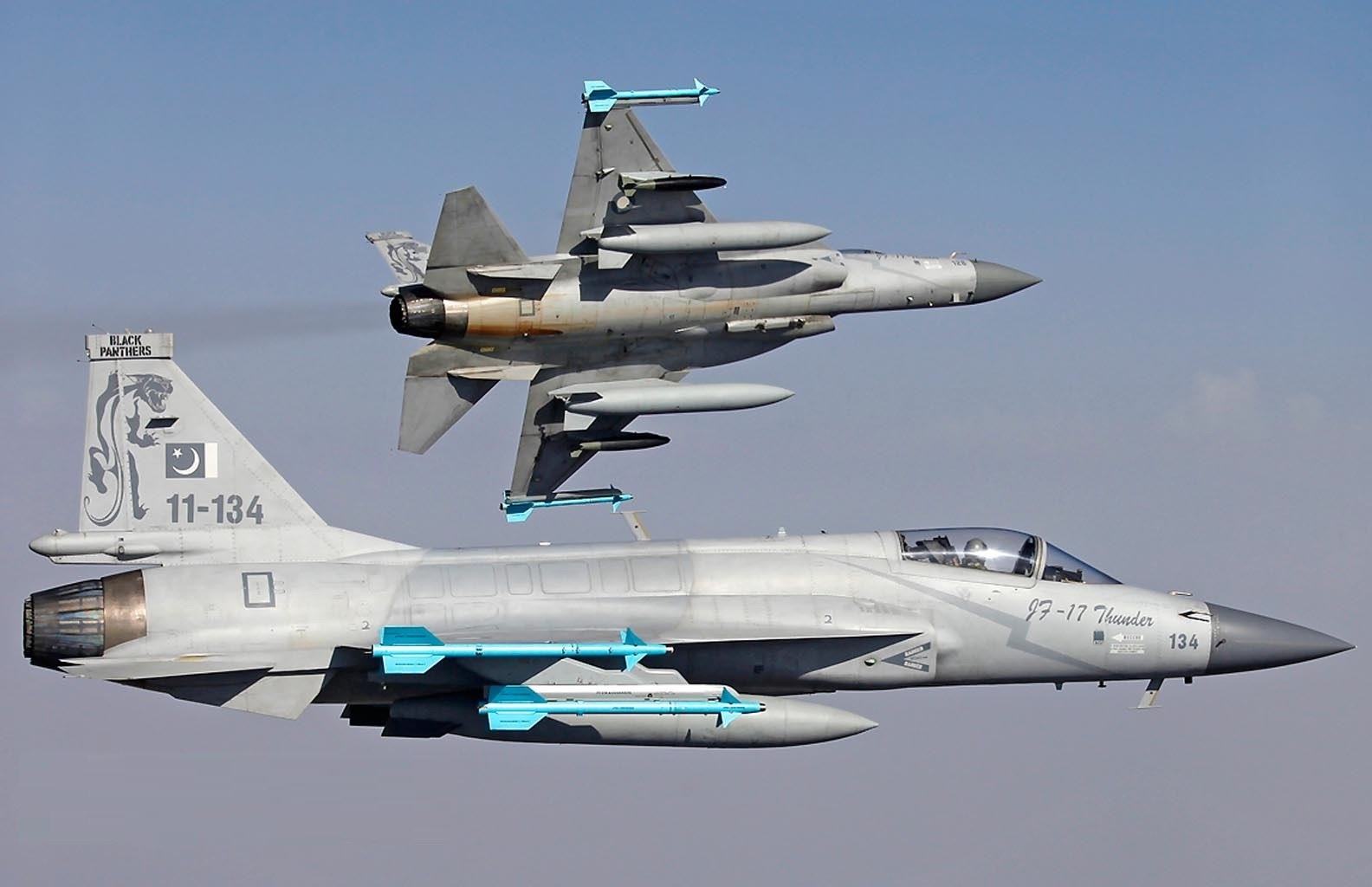 Pakistan Air Force to Unveil Stealth-Enhanced JF-17 Block 4 Fighter Jet by 2028
Pakistan Air Force to Unveil Stealth-Enhanced JF-17 Block 4 Fighter Jet by 2028
-
 India’s AMCA Engine Decision: Safran vs. Rolls-Royce Final Expected by 2025
India’s AMCA Engine Decision: Safran vs. Rolls-Royce Final Expected by 2025
-
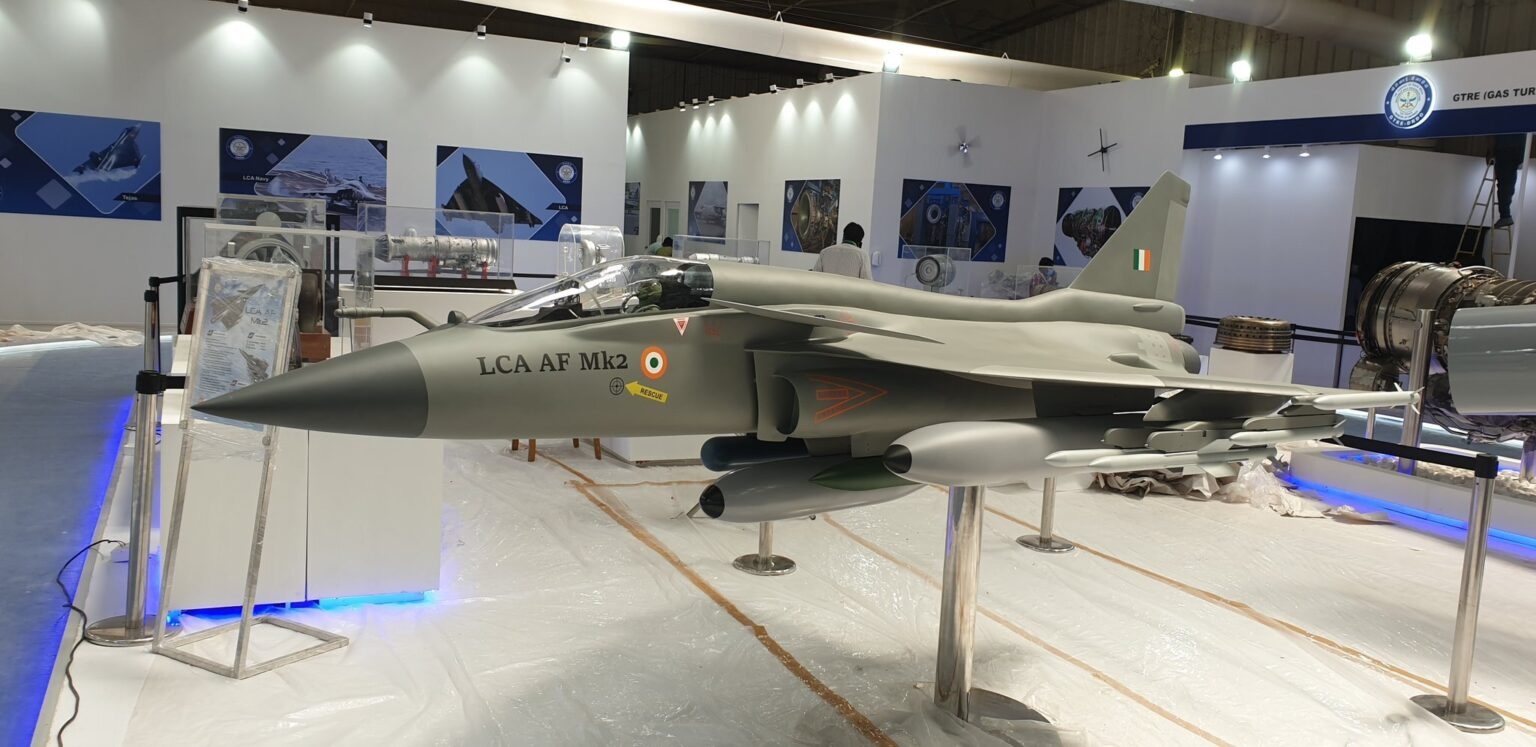 Tejas Mk2 Nears 2025 Rollout as HAL Ramps Up Final Assembly and System Integration
Tejas Mk2 Nears 2025 Rollout as HAL Ramps Up Final Assembly and System Integration
-
 Pakistan Announces 15% Increase in Defence Budget for 2024-25 Amid Economic Crisis
Pakistan Announces 15% Increase in Defence Budget for 2024-25 Amid Economic Crisis
-
 India's TEDBF Program Takes Shape First Flight by 2028: Aiming for Naval Supremacy with Advanced Stealth and Technology
India's TEDBF Program Takes Shape First Flight by 2028: Aiming for Naval Supremacy with Advanced Stealth and Technology
Top Trending in 4 Days
-
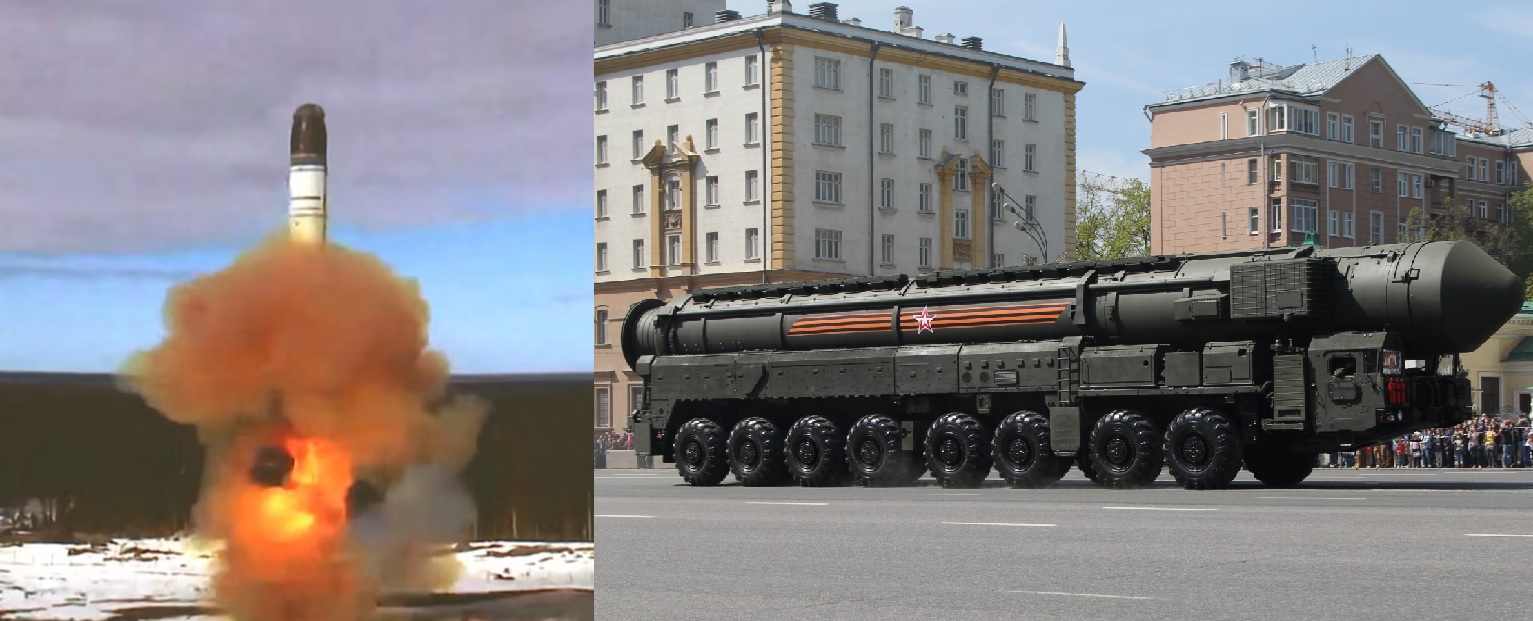 Russia Simulates Full-Scale Nuclear War in Siberia, Deploys Yars ICBMs on Combat Patrols
Russia Simulates Full-Scale Nuclear War in Siberia, Deploys Yars ICBMs on Combat Patrols
-
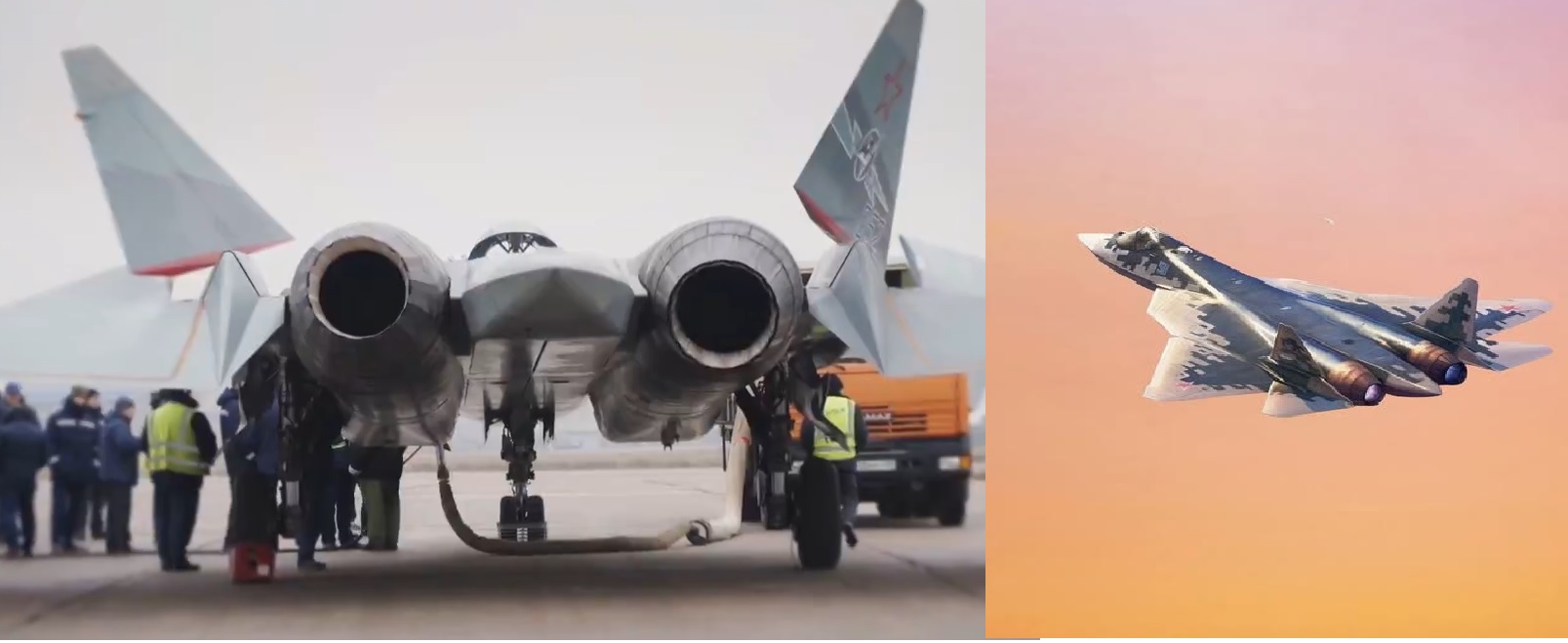 Russian Su-57 Conducts First Flight With Next-Generation Izdeliye-177 Engine
Russian Su-57 Conducts First Flight With Next-Generation Izdeliye-177 Engine
-
 Russian Strike on Mayaki Bridge Threatens Up to 60% of Ukraine’s Fuel Supply
Russian Strike on Mayaki Bridge Threatens Up to 60% of Ukraine’s Fuel Supply
-
 U.S. Seizes China-Linked Oil Tanker Carrying Venezuelan Crude in International Waters
U.S. Seizes China-Linked Oil Tanker Carrying Venezuelan Crude in International Waters
-
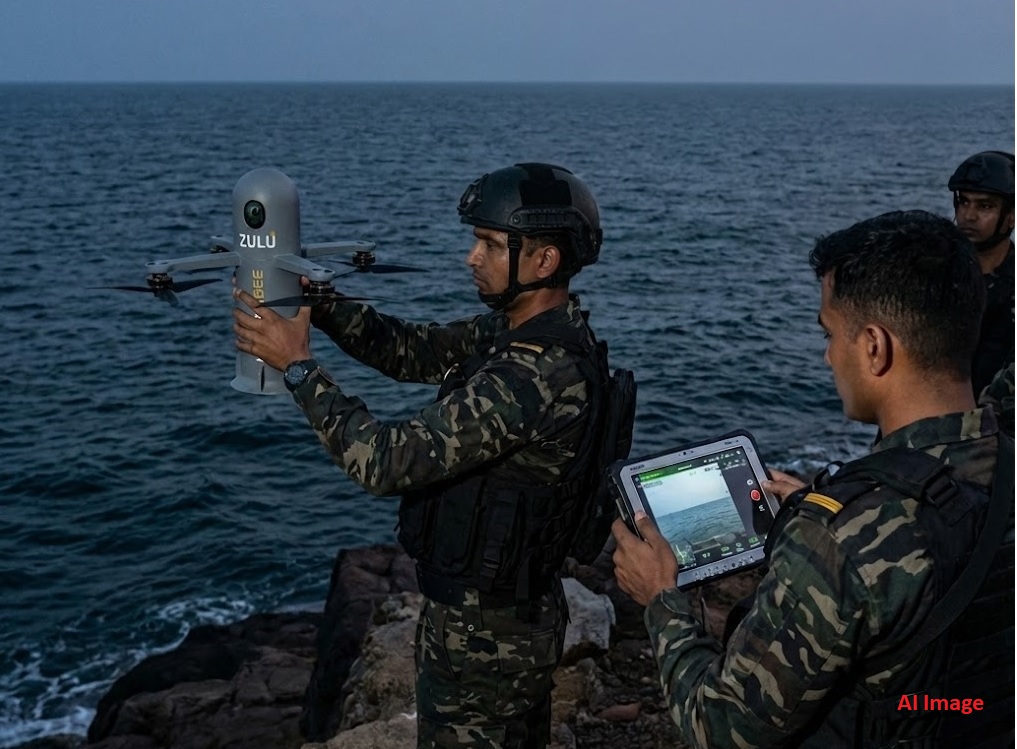 Indian Navy’s MARCOS Induct High-Tech ‘Hoverbee’ Kamikaze Drones for Stealth Operations
Indian Navy’s MARCOS Induct High-Tech ‘Hoverbee’ Kamikaze Drones for Stealth Operations
-
 Russia Brings Back Nuclear-Powered Heavy Cruiser 'Admiral Nakhimov ' After Costly Rebuild
Russia Brings Back Nuclear-Powered Heavy Cruiser 'Admiral Nakhimov ' After Costly Rebuild
-
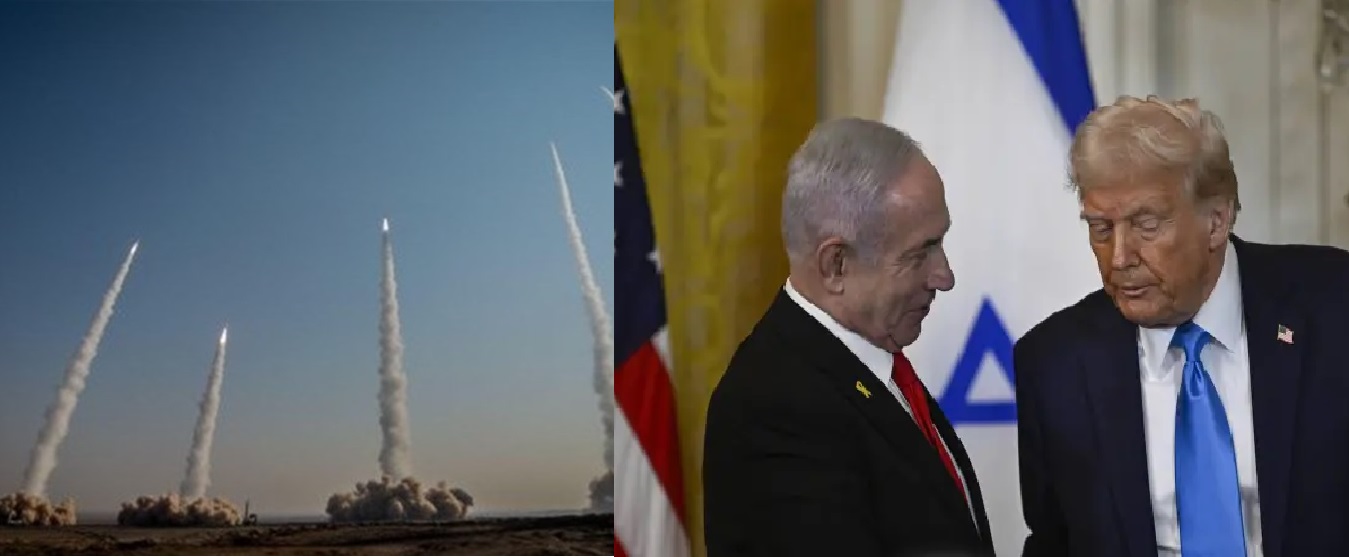 Israel Warns Trump Administration: IRGC Missile Exercise May Mask Surprise Attack Preparations
Israel Warns Trump Administration: IRGC Missile Exercise May Mask Surprise Attack Preparations
-
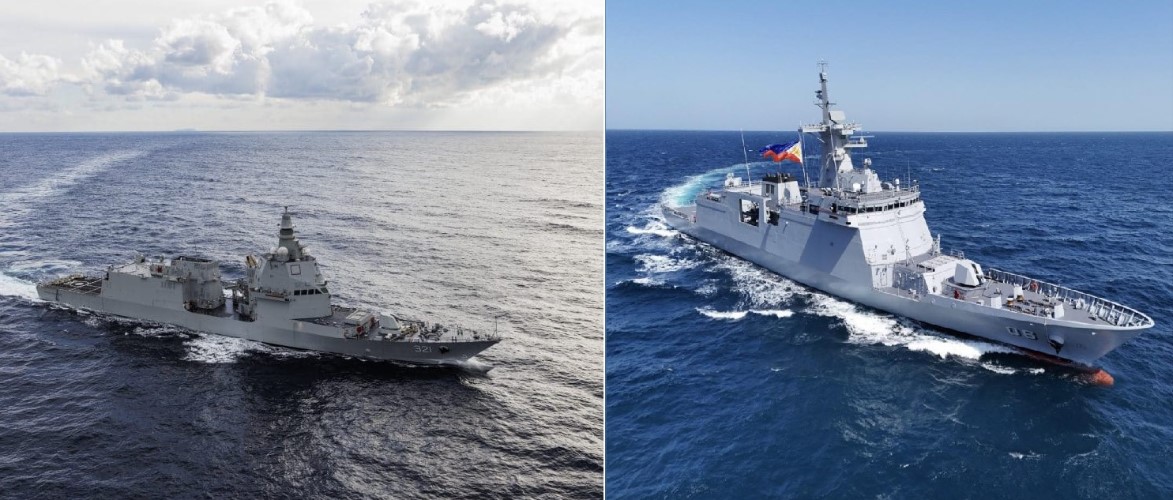 Philippines Awards ₱34-Billion Contract for Two New Missile Frigates to South Korea’s HD Hyundai
Philippines Awards ₱34-Billion Contract for Two New Missile Frigates to South Korea’s HD Hyundai
